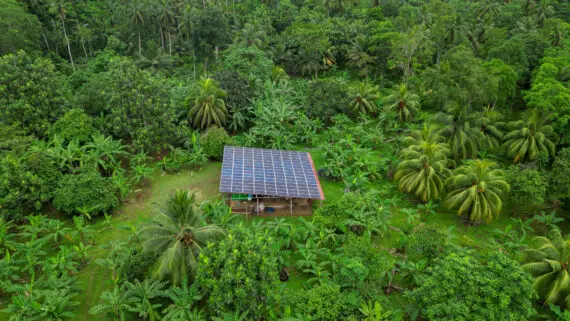By Abiola Afolayan
In February 2022, the U.S. Department of Agriculture (USDA) launched a $1 billion initiative to support farmers and other producers in adopting and using climate-smart agricultural methods. These practices either avoid producing greenhouse gas emissions in the first place, or they sequester carbon, preventing emissions from becoming trapped in the atmosphere.
Slowing and then stopping climate change is essential to ending global hunger since, as Bread for the World emphasizes, it is a main cause. Climate-smart agriculture (CSA) is a systemic approach that focuses on the interconnections of climate change and hunger. CSA considers Earth’s land and sea—from cropland and pastures to forests and fisheries—to identify strategies to increase agricultural productivity, improve resilience to the impacts of climate change, and reduce greenhouse gas emissions.
CSA focuses on finding solutions to the problems making agriculture and food systems unsustainable. The major problems include air, water, and soil pollution, which make it increasingly difficult to grow and harvest enough nutritious food to feed the growing global population; high levels of greenhouse gas emissions, the direct cause of climate change; and food loss and waste, since the disposal of this food causes emissions in addition to those generated by producing it. CSA also seeks to develop innovations that help farmers adapt to a changing climate and its effects on agriculture.
Through its new Climate-Smart Commodities initiative, USDA will support pilot projects that expand markets for U.S. products that use climate-smart practices. “We want a broad array of agriculture and forestry to see themselves in this effort, including small and historically underserved producers as well as early adopters,” said Secretary of Agriculture Tom Vilsack.
In addition to the pilot programs’ large-scale implementation of climate-smart agriculture and/or forestry practices, other activities include quantifying the impact on the climate, promoting the climate-smart foods produced, and developing markets for them.
As Bread notes, hunger has been on the increase for the past several years after decades of progress. One major cause is the accelerating impacts of climate change, since farmers in some areas cannot grow as much food as before, either for themselves or for customers. Adults or entire families may migrate in search of food and a way to earn a living. The food system itself currently generates a substantial amount of greenhouse gases, making this a self-reinforcing cycle. Other causes of the increase in hunger include a large number of armed conflicts and the impacts of the near-total global economic shutdown in the wake of the COVID-19 pandemic.
Climate-smart agriculture is being adopted in a variety of climates around the world. For example, the West Africa Agricultural Productivity Program (WAAPP), a joint program of the World Bank and the Economic Community of West African States (ECOWAS) that operated from 2007 to 2016, worked to educate farmers on how to integrate climate-smart farming techniques into their work and on the benefits of doing so. It demonstrated the potential for agriculture to produce more food, and more nutritious food, even in the face of climate change. Just two of its many accomplishments are developing 14 varieties of early maturing and drought resistant cereals suited to the climate of Senegal, where they are boosting productivity by at least 30 percent, and supporting the research of hundreds of African scientists into additional climate adaptation strategies for agriculture.
The U.S. Feed the Future initiative focuses on improving agricultural productivity and currently works in five WAAPP countries (Ghana, Mali, Niger, Nigeria, and Senegal). Feed the Future could extend and expand WAAPP’s impact by studying its successes and bringing these to a larger scale.
Ending hunger is tied to reducing greenhouse gas emissions. The evidence base for climate-smart strategies is growing rapidly, and making these strategies increasingly integral to the agriculture sector will help build resilience to climate change.
Abiola Afolayan is senior international policy advisor with Bread for the World.



